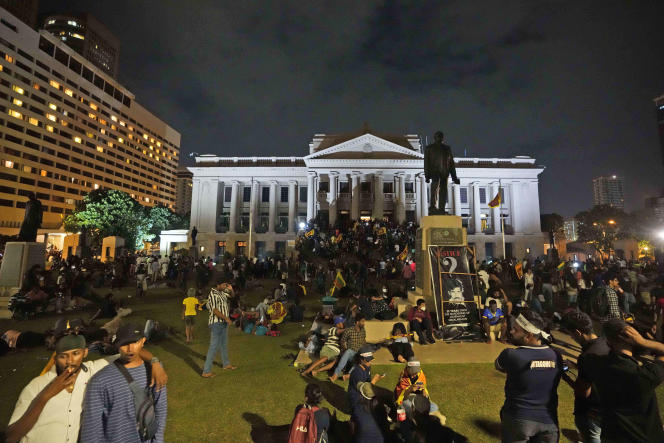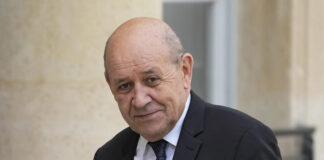The blur remains, Sunday July 10, in Sri Lanka where President Gotabaya Rajapaksa agreed to resign next week, after being forced to flee his residence invaded by the crowd.
The United States has urged the country’s future new leaders to “work quickly” on solutions to restore economic stability and address popular discontent over deteriorating economic conditions, “including shortages of electricity, food and water. fuel,” a State Department spokesperson said.
“To ensure a peaceful transition, the president said he would resign on July 13,” Speaker of Parliament Mahinda Abeywardana said on Saturday on television in the wake of monster protests in Colombo sparked by the economic crisis. hitting the country.
Two relatives of the president resigned without delay: the head of the press service, Sudewa Hettiarachchi, and the media minister, Bandula Gunawardana, who also left his post at the head of the presidential party.
For his part, the Prime Minister, Ranil Wickremesinghe, tried to pave the way for a government of national unity, by urgently convening a crisis meeting of the government with the opposition parties to which he proposed his resignation. But that was not enough to calm the anger of the demonstrators who in the evening besieged his residence, in his absence, and set it on fire, without causing any injuries.
President ‘escorted to safety’
Earlier, President Rajapaksa, in the hot seat for months, had just enough time to flee a few minutes before several hundred demonstrators entered the presidential palace, a symbolic building normally reserved for receptions but where he had moved in April after his private home was stormed.
“The president has been escorted to safety,” a defense source told Agence France-Presse. Soldiers guarding the official residence fired in the air to deter protesters from approaching the palace until it was evacuated. According to this source, the president boarded a military ship heading for territorial waters in the south of the island.
Local TV stations showed footage of hundreds of people climbing the gates of his palace. Protesters then streamed live videos on social media of the crowds marching inside, some enjoying themselves in the presidential pool or in the bedrooms.
The protesters also took over the nearby presidential offices in front of which demonstrators had been camping for three months.
An unprecedented crisis
Demonstrations to demand the resignation of Mr. Rajapaksa gathered hundreds of thousands of people on Saturday, with protesters even forcing the railway authorities to transport them by train, when the country is almost out of gas. Three people were wounded by bullets when the police tried to disperse the crowd gathered in the administrative district of the capital, with a lot of tear gas. According to the authorities, some 20,000 soldiers and police had been dispatched to Colombo to protect the president.
Once a middle-income country with a standard of living envied by India, Sri Lanka has been devastated by the loss of tourism revenue following a jihadist attack in 2019 and the Covid-19 pandemic.
The crisis, unprecedented since independence in 1948 of this island of 22 million inhabitants, has been aggravated, according to economists, by a series of bad political decisions. The presidential clan, in power since 2005, is held responsible for this situation by the population.
Rampant inflation, shortages, Sri Lanka lacks everything: gasoline, electricity, food, medicine. The country is negotiating a rescue plan with the International Monetary Fund (IMF), which may impose tax increases. The United Nations estimates that around 80% of the population cannot afford three meals a day.














